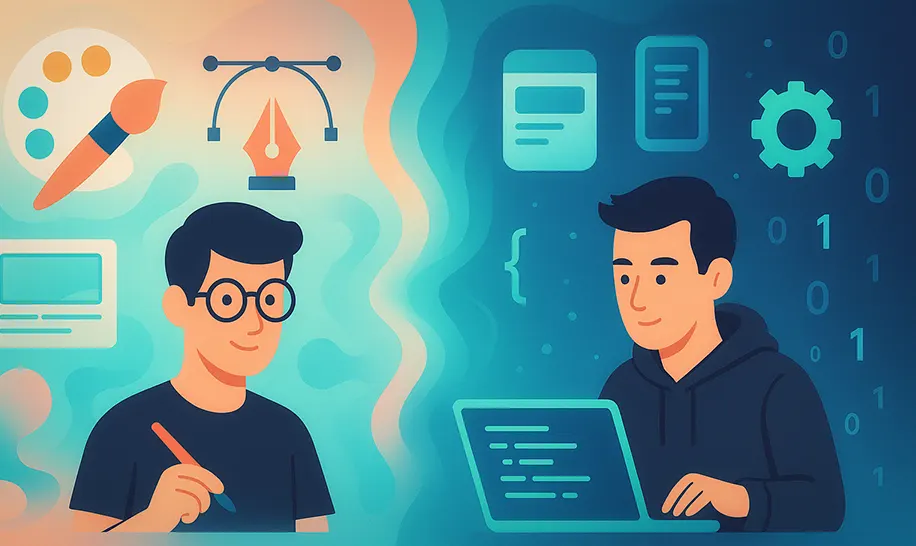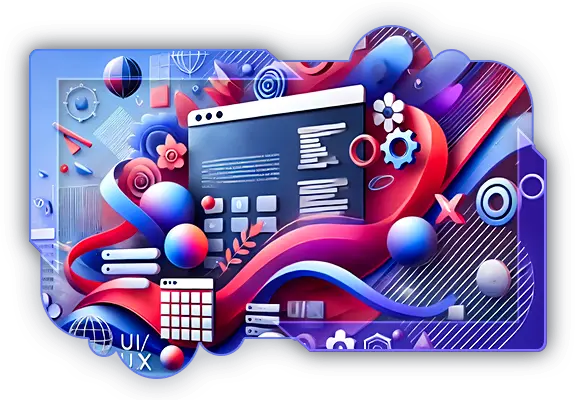
Designer vs Developer: Which Career Path Should You Choose?
Choosing between a career as a designer or a developer can feel like standing at a crossroads. Both roles are integral to creating digital products, yet they demand vastly different skill sets, mindsets, and lifestyles. Whether you're drawn to the visual arts or the logic of coding, this guide will help you weigh the pros and cons of each path to determine which aligns best with your strengths, passions, and long-term goals.
What Does a Designer Do?
Designers are the creative visionaries behind the visual and user experience (UX) of websites, apps, branding, and more. They focus on aesthetics, usability, and storytelling. Roles include graphic designer, UI/UX designer, product designer , and motion graphics artist , among others.
Key Responsibilities :
- Creating wireframes, prototypes, and visual mockups.
- Selecting color schemes, typography, and layouts.
- Collaborating with clients or teams to understand project goals.
- Ensuring designs align with brand identity and user needs.
- Using tools like Adobe Creative Suite, Figma, Sketch, or Procreate.
Pros of Being a Designer
- Creativity at the Core
Designers thrive on originality. If you love brainstorming ideas, experimenting with visuals, and turning abstract concepts into tangible art, this role offers endless creative freedom. - Client Interaction and Collaboration
Designers often work closely with clients, marketers, and developers, making it a social and dynamic career. Presenting designs and receiving feedback can be rewarding for those who enjoy collaboration. - Flexible Work Environments
Many designers freelance or work remotely, offering flexibility in hours and location. Creative agencies, startups, and in-house teams all provide diverse opportunities. - Visible Impact
Your work is immediately visible. Seeing a logo you designed on a product or a website you crafted go live is immensely satisfying.
Cons of Being a Designer
- Subjective Feedback
Creativity is subjective. Clients or stakeholders may request endless revisions, leading to frustration when your artistic vision clashes with their preferences. - Pressure to Stay Trendy
Design trends evolve rapidly (e.g., gradients, minimalism, retro aesthetics). Keeping up with tools, styles, and platforms can feel overwhelming. - Tight Deadlines
Balancing creativity with deadlines is challenging. Rushed projects may compromise quality, leading to burnout. - Lower Technical Barriers (and Pay Gaps)
While some designers learn basic coding for UX prototyping, entry-level roles often require less technical training than development. This can lead to lower salaries compared to developers, especially in certain industries.
What Does a Developer Do?
Developers are the architects behind the functionality of websites, apps, and software. They write code to bring designs to life, troubleshoot bugs, and ensure seamless user interactions. Roles include front-end developer, back-end developer, full-stack developer, mobile app developer , and software engineer .
Key Responsibilities :
- Writing clean, efficient code in languages like JavaScript, Python, or Java.
- Collaborating with designers to implement visual elements.
- Debugging and testing applications for performance and security.
- Staying updated with emerging technologies and frameworks.
- Using tools like GitHub, Visual Studio Code, and cloud platforms.
Pros of Being a Developer
- High Demand and Job Security
Developers are in demand across industries. From healthcare to finance, every sector needs tech solutions, ensuring stable job prospects. - Problem-Solving Satisfaction
Solving complex coding challenges or optimizing slow-performing apps offers a sense of accomplishment. Logical thinking and continuous learning keep the work engaging. - Lucrative Salaries
Developers often earn higher starting salaries than designers, especially in specialized areas like machine learning, cybersecurity, or mobile app development. - Remote Work Opportunities
Many developers work remotely or in hybrid setups, with companies valuing output over office presence.
Cons of Being a Developer
- Steep Learning Curve
Mastering programming languages, frameworks, and tools takes years. Beginners often face frustration with debugging, syntax errors, and evolving technologies. - Long Hours and Crunch Time
Meeting deadlines for software launches or fixing critical bugs can lead to 80-hour weeks, harming work-life balance. - Less Creative Freedom
While creativity exists in problem-solving, developers often follow strict specifications. The "vision" comes from others (like designers or product managers), leaving less room for artistic input. - Sedentary Lifestyle
Coding requires prolonged sitting, which can lead to health issues if not balanced with exercise and breaks.
Key Similarities and Differences
Both careers involve working on digital products and collaborating with cross-functional teams. However:
- Designers prioritize visual appeal and user experience , while developers focus on functionality and technical execution .
- Designers often work with static assets (logos, illustrations), whereas developers build dynamic systems (databases, APIs).
- Both roles benefit from understanding the other's domain—e.g., a designer with basic coding knowledge can create more realistic prototypes, while developers with design skills craft better user interfaces.
Myths vs Reality
- Myth 1 : "Designers don't need technical skills."
Reality : Modern designers use prototyping tools like Figma or Adobe XD and may learn HTML/CSS for UX validation. - Myth 2 : "Developers just write code all day."
Reality : Developers spend significant time in meetings, documenting processes, and collaborating with non-technical stakeholders. - Myth 3 : "Design is easy; coding is hard."
Reality : Both fields demand dedication. Design requires mastering aesthetics and psychology; development requires mastering logic and systems.
How to Decide: Ask Yourself These Questions
- Are you more passionate about visuals or logic?
- If rearranging layouts or picking color palettes excites you, choose design.
- If solving puzzles or automating tasks thrills you, opt for development.
- Do you prefer collaboration or independent work?
- Designers often work closely with clients, while developers may spend more time alone at their computers.
- What's your tolerance for criticism?
- Designers face subjective feedback daily; developers deal with objective bug fixes.
- What are your long-term goals?
- Want to run a creative agency? Start with design.
- Dream of building the next app? Pursue development.
- Are you willing to continuously learn?
- Both fields require lifelong learning, but developers often face faster-changing toolkits.
Hybrid Paths: Can You Do Both?
Yes! Many professionals bridge the gap:
- UX/UI designers with coding skills (HTML/CSS/JavaScript).
- Front-end developers who handle both design and development.
- No-code developers using platforms like Webflow or Bubble to build apps without traditional coding.
However, mastering both fields takes time. Most experts recommend specializing first before expanding.
Conclusion: Choose What Resonates With You
There's no one-size-fits-all answer. A career as a designer offers creativity, collaboration, and visual impact but demands resilience against subjective critiques. A developer career promises problem-solving, stability, and innovation but requires patience and persistence.
Reflect on your strengths, interests, and lifestyle preferences. Try beginner courses in both fields—Codecademy for coding, Coursera for design—to gauge your interest. Talk to professionals in each role, attend meetups, or take on small freelance projects to test the waters.
Ultimately, whether you choose to paint the canvas or build the framework, both paths are essential to shaping the digital world—and neither is inherently "better." It's about finding where your passion and skills intersect.



